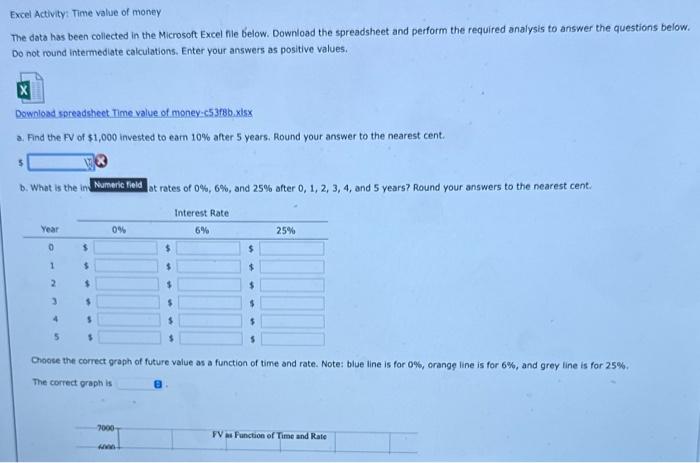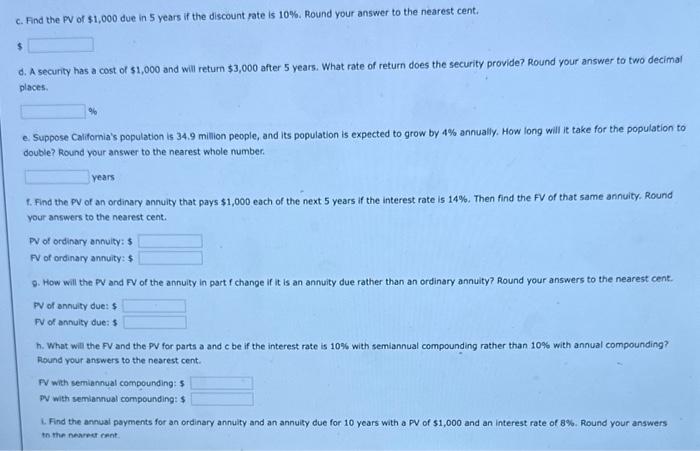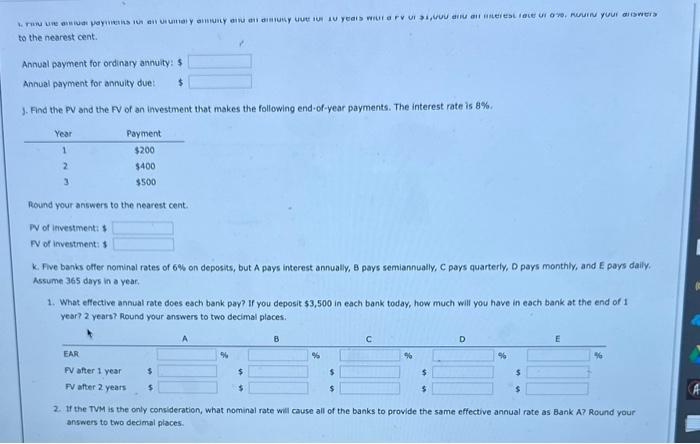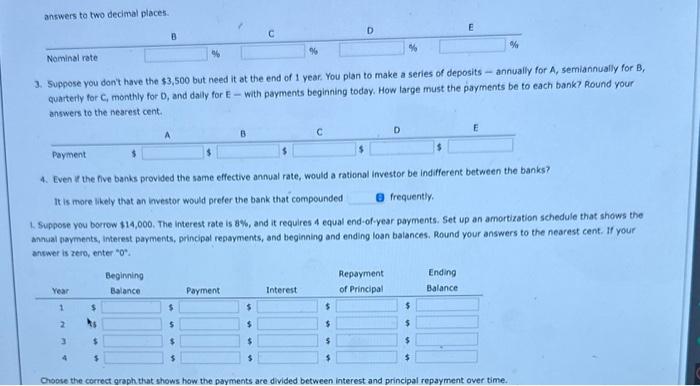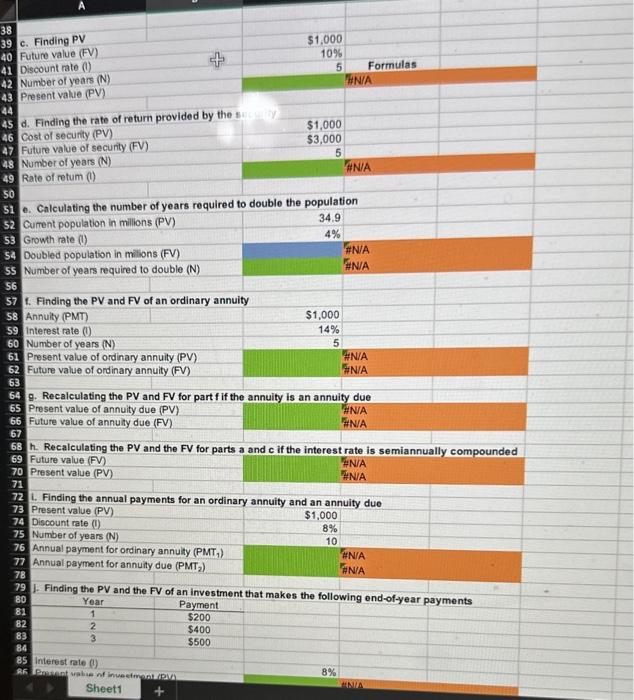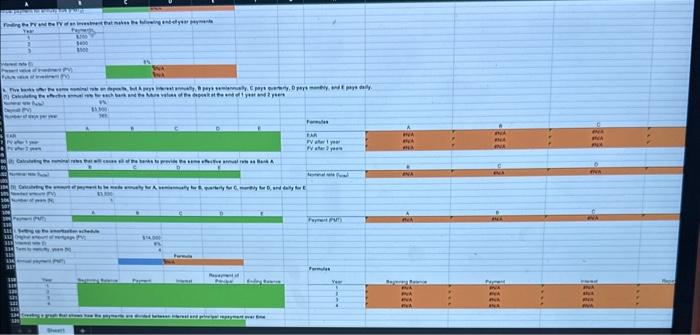Excel Activity: Time value of money The data has been collected in the Microsoft Excel nie below. Download the spreadsheet and perform the required analysis to answer the questions below. Do not round intermediate calculations, Enter your answers as positive values, Download spreadshect Time value of money-c5 378b.x5x a. Find the FV of $1,000 invested to eam 10% after 5 years. Round your answer to the nearest cent. (3) b. What is the in at rates of 0%,6%, and 25% after 0,1,2,3,4, and 5 years? Round your answers to the nearest cent. Chace the correct graph of future value as a function of time and rate. Note: blue line is for 0%, orange line is for 6%, and grey line is for 25%. The correct graph is c. Find the PV of $1,000 due in 5 years if the discount pate is 10%. Round your answer to the nearest cent, d. A security has a cost of $1,000 and will return $3,000 after 5 years. What rate of return does the security provide? Round your answer to two decimal places. e. Suppose Califomia's population is 34.9 miliion people, and its population is expected to grow by 4% annually. How long will it take for the population to double? Round your answer to the nearest whole number. years 1. Find the PV of an ordinary annuity that pays $1,000 each of the next 5 years if the interest rate is 14%. Then find the FV of that same annuity. Round your answers to the nearest cent. PV of ordinary annuity: $ FV of ordinary annuity: $ 9. How will the PV and FV of the annuity in part f change if it is an annuity due rather than an ordinary annuity? Round your answers to the nearest cent. PV of annuity due: $. FV of annulty due: 5 h. What will the FN and the PV for parts a and c be if the interest rate is 10% with semiannual compounding rather than 10% with annual compounding? Round your answers to the nearest cent. F weh semiannual compounding: 5 DV with semiannual compounding: $ 1. Find the annual payments for an ordinary annuity and an annuity due for 10 years with a PV of $1,000 and an interest rate of 8%. Round your answers to the nawreet eant. to the nearest cent. J. Find the PV and the FV of an investment that makes the following end-of-year payments. The interest rate is 8%. Round your answers to the nearest cent. W of ievestment: $ N of investment: 3 K. Five banks offer nominal rates of 6% on deposits, but A pays interest annually, B pays semiannually, C pays quarterly, D pays monthly, and E pays daily. Assume 365 days in a year, 1. What effective annual rate does esch bank pay? If you deposit $3,500 in each bank today, how much will you have in each bank at the end of i year? 2 years? Round your answers to two decimal places: 2. If the TVM is the only concideration, what nominal rate will cause all of the banks to provide the same effective annual rate as Bank A? Round your answers to two decimal places: 3. Suppose you dont have the $3,500 but need it at the end of 1 year. You plan to make a series of deposits - annually for A, semiannually for B, quartetly for C, monthly for D, and daaly for E - with payments beginning today. How large must the payments be to each bank? Round your answers to the nearest cent. 4. Even it the five banks provided the same effective annual rate, would a rational investor be indifferent between the banks? It is more likely that an investor would prefer the bank that compounded frequently. 1. Suppose you borrow 114,000 . The interest rate is 8%, and it requires 4 equal end-of-year payments. Set up an amortization schedule that shows the annual nayments, interest payments, principal regayments, and beginning and ending loan balances. Round your answers to the nearest cent. If your anwwer is zero, enter 0
